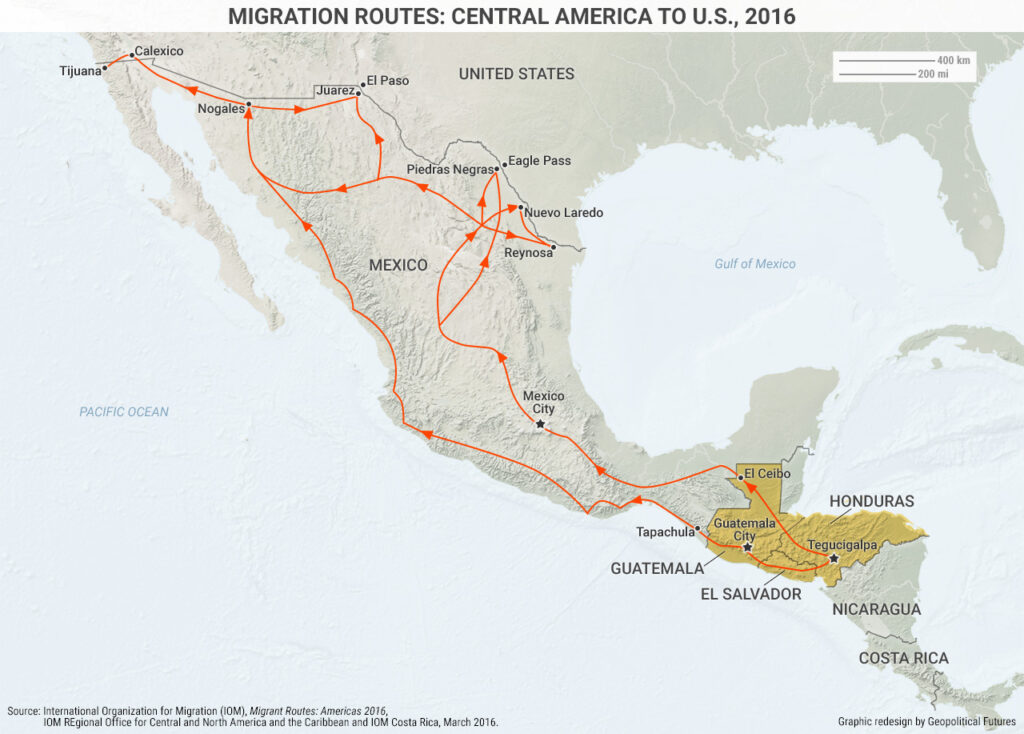There are many reasons why migrants leave their homes, and choose to head north, eventually reaching the southern border lands of the United States. Most of them come from Mexico, Honduras, El Salvador and Guatemala; these last three are known as the Northern Triangle. Violence, poverty and corruption are just a few of the reasons people decide to migrate and embark on a journey that can put them and their children’s lives at risk.

With the aim to understand the roots of Central American and Mexican immigration into the United States, we must start by looking back at the history of United States military interference in the region and its consequences. The timeline of US interventions presented here spans from the late 1800s–when the U.S.-based fruit companies discovered the business opportunities and that profits could be made by importing bananas from the region–to the Cold War, then to the Clinton Administration, and on to the post 9/11 policies that paved the path to the present day. This timeline provides the context for understanding current immigration policies carried out by the present U.S. Administration. The long history of events helped to destabilize the region, have led to further conflicts, increased government and corporate pressures to solidify power, and condoned the systemic corruption of rulers willing to protect U.S. interests through militarization.
For this purpose, it is relevant to trace the media coverage that justified U.S. intervention and examine the language and structure of security discourses and the way they have served to distort conditions and events that took place. The American public has been continuously misled since then, and it continues to be misinformed now. This has led to the polarization of the subject at hand; the right-wing media reinforcing President Trump’s narrative that demonizes Latin American immigrants, while the more liberal-leaning media, for the most part, condemns this narrative and is often critical of current policies. An important moment for understanding these narrative constructions occurred during the fall of 2018 when a migrant caravan emerged from the left Honduras to make its way to the border, which is analyzed in depth.
The historical and socio-political ramifications of the United States’s immigration laws as well as international diplomacy give a clear picture of how Central America has gotten to this point. These interactive maps show the viewer the reasons and testimonies detailing why people from these regions hope to immigrate to the United States. The project also dives into the efforts of organizations like the Kino Border Initiative, which provides much needed assistance to migrants and fights against the anti-immigration narrative. By educating people on such sensitive subjects like immigration and the context of why Central Americans and Mexicans emigrate, this capstone project could be used as an interactive tool to understand years of history that lead up to the migrant crisis today. As a Honduran Fulbright Scholar and legal immigrant, I will also provide my thoughts on what it’s like living in President Donald Trump’s America.